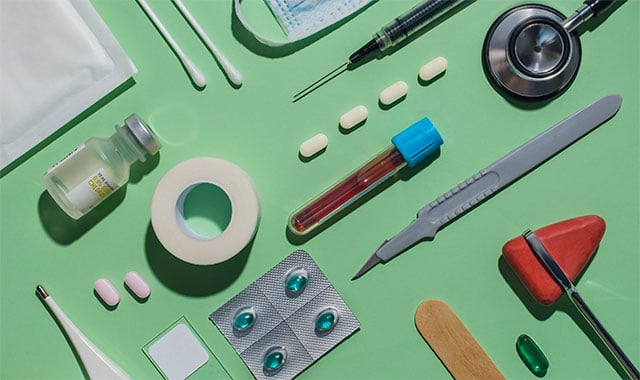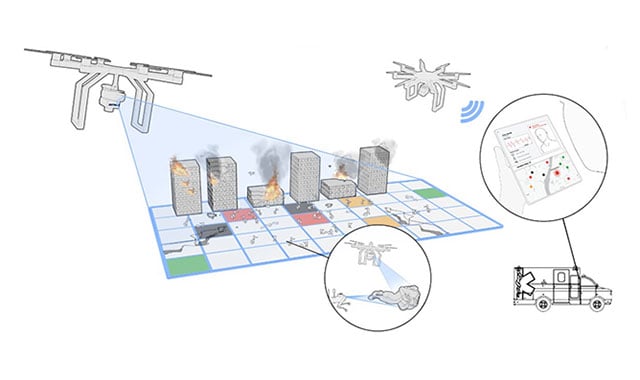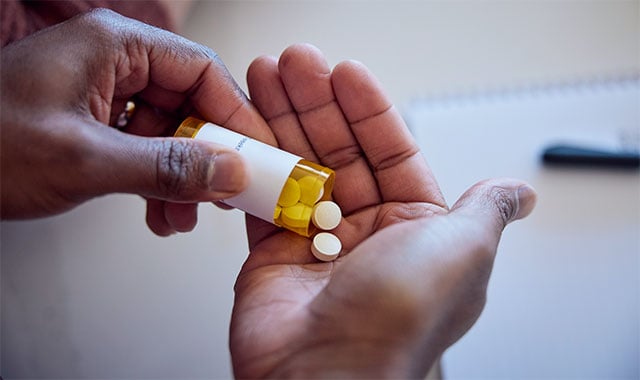10 Ways to Align Your Medical Device with Human Factors Industry Best Practices

Human-centric design is a product development approach that centers on the user, their needs, and the use environment. Grounded in the principles of human factors engineering, human-centric design places a strong emphasis on user needs, preferences, and behaviors to ensure both the design process and medical device are harmoniously aligned with user capabilities and expectations.
Integrating the user early and often into the process will enable a medical device built for the user to use in their environment and aligned with their use behaviors. This ensures devices are safe, effective, exceed user needs, and align with industry guidelines.
Usability engineering, a component of human factor engineering, plays a critical role in the development, evaluation, and validation of medical devices. In 2016, the FDA released guidance to emphasize the integration of human factors and usability engineering principles throughout the medical device development process to improve the safety and effectiveness of medical devices for intended users, uses, and use environment. 1, 2, 3
Battelle has over 65 years of medical device design and development experience, and a 100% success rate with FDA submissions related to our human-centered design (HCD) work. Below are 10 ways to align your medical device with Human Factors Industry Best Practices.
#1: Conduct Contextual User Research
The primary goal of contextual research is to gather insights to inform the design and development of products, services, or systems that meet users' actual needs and use behaviors. Studies with observational research and cognitive interviews will gather insights into users’ daily challenges and expectations helping to navigate between design options. This user-centered approach serves as a foundation for understanding intended users and device design that truly caters to the user.
Observation and interaction with users in their real-world environments provide a deeper understanding of actual behaviors, needs, motivations, and obstacles. By observing users in their natural settings, designers can identify pain points, challenges, and unmet needs that users may not be aware of or even able to express in traditional research settings.
For the greatest value, conduct user research early and often throughout the product lifecycle to improve product design and address potential use errors earlier in the design process. Early formative human factors studies help identify product design issues, use errors, and provide insight to your users’ perceptive, cognitive, and physical requirements in the use of the device.
#2: Engage and Align Key Stakeholders Throughout the Design Journey
Novel solutions can surface through fostering cross-disciplinary team collaboration, expertise exchange, and diverse viewpoints when working though design decisions. Collaborate with medical experts, engineers, designers, regulatory specialists, and users (i.e., patients, caregivers, and healthcare professionals) at every phase of product development to ensure a balanced approach that fosters successful product adoption.
#3: Implement an Iterative Design and User Testing Process
Implement an iterative design and user testing process that involves continuous feedback and refinement. While prototyping is common in medical device development for engineering feasibility, it should also be used for capturing user and expert feedback. Create prototypes of your designs and involve users in testing and evaluating early design iterations and throughout the design process to identify use errors and use difficulties making iterative improvements based upon actual use data. Prototypes are an easy, cost-effective method for communicating design intentions and soliciting device feedback. An iterative process provides clear data that identifies user pain points and refining design concepts prior to final design “lock.” The result: a device that aligns with user needs and requirements, market expectations, and medical device industry best practices.
#4: Identify Critical Tasks
Identify critical tasks to determine task execution steps required for accurate device/system analysis when determining safe and effective use. A critical task is a user task which, if performed incorrectly or not performed at all, would or could cause serious harm to the patient or user, where harm is defined to include compromised medical care.4 Given the variability of users, users’ mental models, and use environments, use errors can range from minor inconveniences to permanent impairment and even death. Identifying critical tasks is the basis for which a product/system can be validated as safe and effective when used by their intended users in the intended use environment as required by the FDA.
#5: Rigorous Usability Testing
Rigorous usability testing is a user-centered research method used to evaluate the effectiveness, efficiency, and overall user satisfaction of a product.1 The goal is to observe real users interacting with the device in a simulated or real-world environment and capturing data used to identify potential usability issues including non-intuitive user interfaces, dexterity issues with controls and design flaws that might hinder users from accomplishing their intended task by using the product or system.
Early user tests are known as formative studies and used to evaluate the medical device user interface for early design iteration and to assess timing of human factors validation testing. In human factors validation testing (also known as a summative study), performance data is collected to demonstrate the device is safe and effective when used by the intended users in the intended use environment. Usability study design can vary from device to device, and our Battelle HCD team can help you navigate the nuance of protocol design, execution, and final analysis. Here are four high-level recommendations:
- Simulated use scenario(s) must closely represent actual real-life use in both situation and use environment.
- Consider the use of training carefully. Do you want to stand before the FDA and state you will train every user before they have access to the device or system?
- Evaluate representative users for the user population(s). Consider the following: use roles, user demographics, and user education.
- Summative testing requires commercially representative products/systems (products/systems that are intended to be shipped including product packaging and Instructions for Use).
#6: Ensure Usability Testing of All Product/System Materials
Manufacturers are advised to conduct usability testing with representative users to identify potential use-related issues (use errors, close calls, use difficulties). This involves designing appropriate usability studies and evaluating user interactions with the device/system. Remember, the FDA expects all materials to be user evaluated including instructions for use (IFU), quick reference guides (QRG), device labeling, package labeling, symbol comprehension, and alternative language presentation.
#7: Consider Training, Instruction, and Post-Market Surveillance
Manufacturers are expected to provide clear and concise instructions for device use. When appropriate, develop standardized training programs to assist users in understanding and operating the device effectively. The guidance also emphasizes the importance of post-market surveillance to identify and address any usability issues that could arise after the device is on the market. Planning can improve IFU effectiveness and minimize potential risks.
#8: Create User-Centered Design Documentation
Create user-centered design documentation that captures the entire design process. This documentation should outline the user research conducted, design decisions made, usability testing results, and iterations performed. This information is crucial for regulatory submissions and demonstrates your commitment to following HCD principles.
#9: Conform to International Standards
Beyond industry guidance documents, there are multiple international standards to help ensure devices are safe for medical professionals, patients, and caregivers.
- ISO 13485:2016 for Quality Management Systems5
- ISO 14971:2019 for Medical Device Risk Management6
- IEC 62366:2015 for Application of Usability Engineering to Medical Devices7
Ensure that the device/system has been developed with these standards in mind. Involving Battelle’s HCD Team from the beginning can help you navigate the usability requirements and compliance process.
Keep in mind that aligning your design process with HCD principles is an ongoing journey that necessitates collaboration, communication, and empathy for end users. By involving users at every stage and prioritizing their needs, you can craft a medical device that meets industry requisites and significantly enhances patient outcomes and user contentment.
#10: Be Open To Change
Clients come to Battelle with an idea that they have pushed far down the development process, only to run into issues with regulatory bodies. This usually happens when a company assumes they can jump right to a summative study and receive marketing approval. This approach can easily double the cost of product development. Starting the process knowing that there will be changes and having the willingness to be open to these changes will reduce costs and improve the regulatory approval process.
Featured Expert

Russ Kittel
Industrial Engineer II
Russ Kittel is an accomplished Industrial Engineer II with a decade of industry experience, including work with the Department of Defense and various projects at Battelle involving the military, environmental, transportation, energy, and medical sectors. Currently, he is an industrial designer/engineer with the Medical Device Solutions group at Battelle, where he designs various medical products/systems and consumer goods. Russ holds a Bachelor of Arts degree from the Columbus College of Art and Design, which equipped him with the skills to excel in medical device design.
References:
- 1Applying Human Factors and Usability Engineering to Medical Devices
- 2FDA Executive Summary
- 3Human Factors & Usability Design in Medical Devices
- 4Design-Guide-Oxygen-Concentrator-Usability-Low-Resource-Settings
- 5ISO 13485:2016 - Medical devices — Quality management systems — Requirements for regulatory purposes
- 6 ISO 14971:2019 - Medical devices — Application of risk management to medical devices
- 7IEC 62366-1:2015 - Medical devices — Part 1: Application of usability engineering to medical devices
Related Blogs
BATTELLE UPDATES
Receive updates from Battelle for an all-access pass to the incredible work of Battelle researchers.








